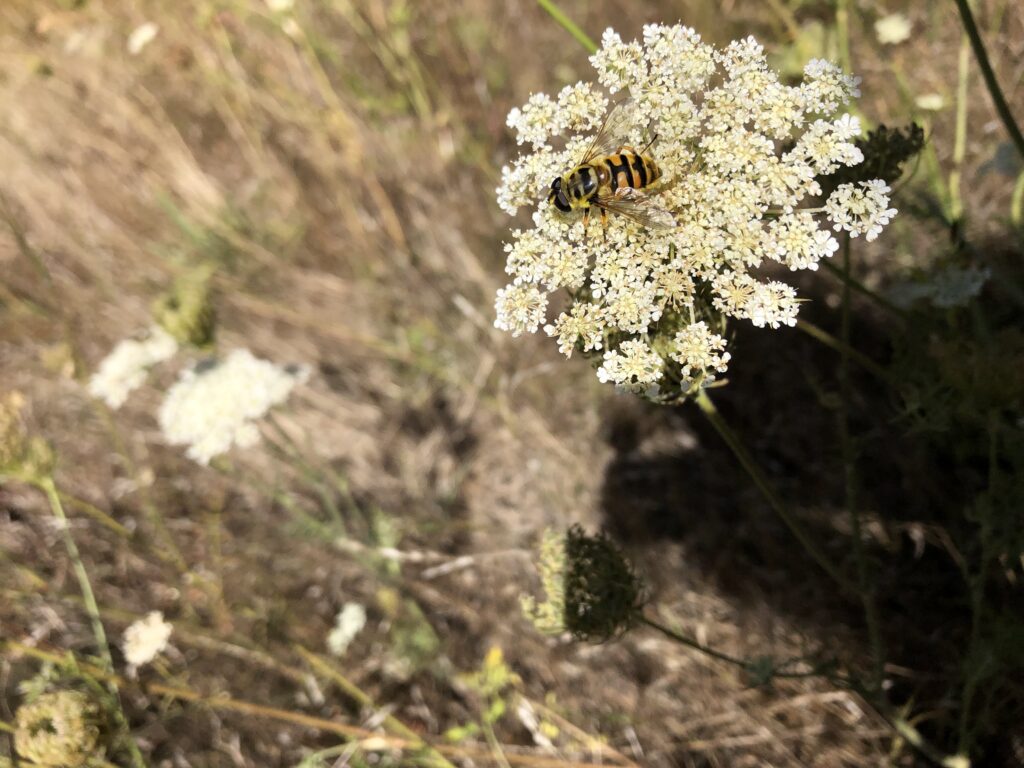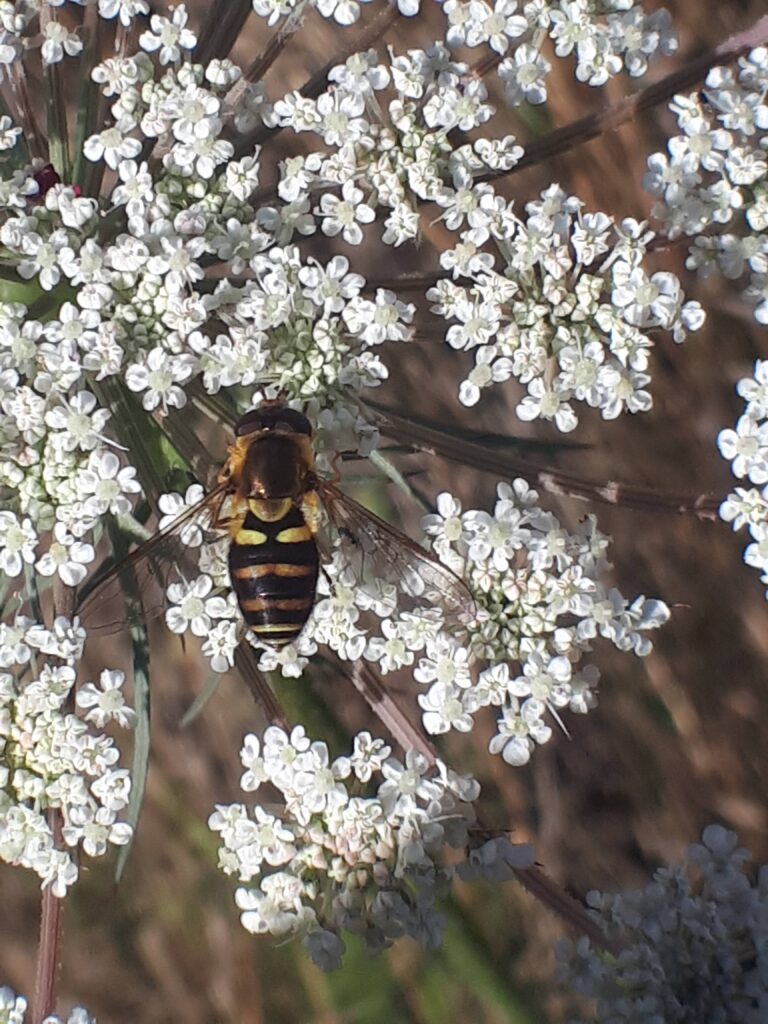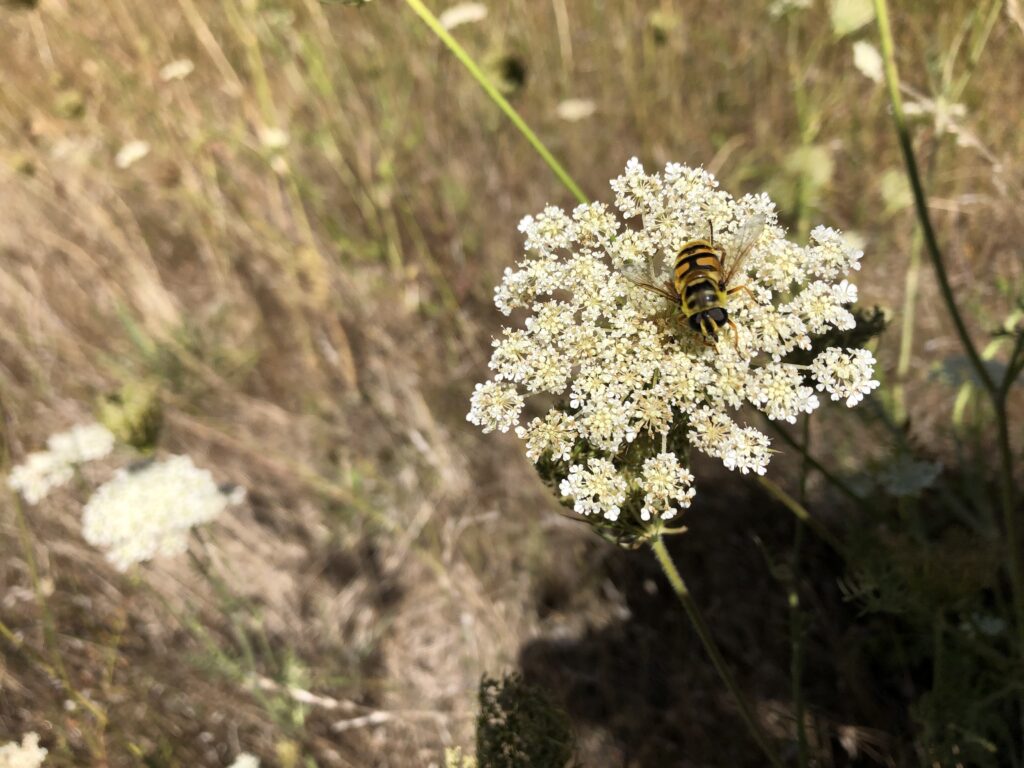Hoverfly (Syrphidae)

While they share the same colour pattern of bees, these fast fliers are actually of the diverse family Syrphidae, commonly called Hover Flies due to their ability to hover in place. This family is of the order Diptera (true flies) and is found widespread across Canada. Common to see around flowers in the warmer months, these flies commonly overwinter in leaf litter. It is important that some leaf litter is left behind after fall clean-ups for these flies to safely spend the winter.

Adult hoverflies are important pollinators. Most feed on pollen and nectar-producing flowers and in the process, carry pollen from flower to flower, aiding plant reproduction. They are also an important aphid predator, laying their eggs amongst aphid colonies for larvae to feed on the aphids. Once they are adults, they switch to a pollen and nectar based diet. They are susceptible to insecticides commonly applied for aphid infestations. Their larvae look similar in shape to maggots, but are a yellow colour and have one pointed end and one rounded end. If you see these around your aphid infestation, avoid applying pesticides as you will kill the beneficial hoverflies among them.

These flies mimic bees and wasps by copying their pattern of colour. Unlike bees and wasps, hoverflies have no sting to defend themselves. By copying the colouring of their dangerous cousins, animals are likely to avoid them. You can tell them apart from bees and wasps by their outstretched, single pair of wings (unlike the folded, two pairs of bees and wasps). They also don’t have the clusters of pollen on their abdomens or legs which are commonly seen on bees. Keep an eye out for these agile fliers in the park, particularly in our new pollinator meadow.
For more information, visit the Canadian Wildlife Federation, and Washington State University.


